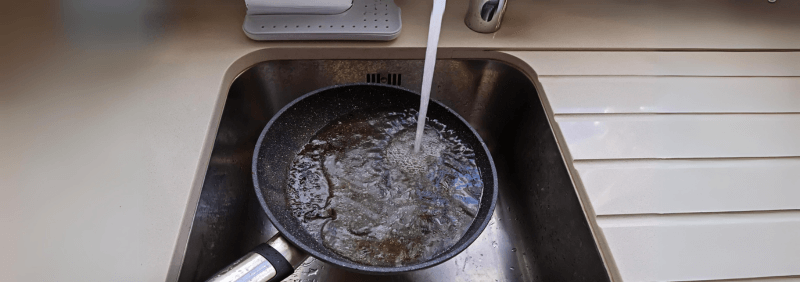How-To: Protect our Sewers From Fatbergs

What is a fatberg?
Fatbergs - a combination of the words fat and icebergs - are exactly what they sound like, congealed lumps of matter found in sewer systems. They are formed from a combination of non-biodegradable waste, such as wet wipes and cooking fat, that is wrongly disposed of in toilets and kitchen sinks.
These fats and greases congeal as they cool within sewer systems and pipelines, catching more matter as they grow and eventually causing blockages that can affect areas from individual homes to entire cities.
London Sewer Fatberg - 2017
In 2017, a fatberg weighing an estimated 130 tonnes and measuring 250 meters long was found blocking a section of London's Victorian-era sewage network. It took a team armed with protective equipment and shovels an entire month to chip away the solid mass that was reported to be as hard as concrete, preventing raw sewage from flooding the streets.
In London, approximately 198,129,000 gallons of raw sewage overflows into the Thames every week according to Tideway. This is due to the sewer system not being able to handle the amount of waste that is flushed every second of every day. The current 150-year-old sewer system is not able to handle the capital's rapidly increasing population - originally designed to serve a city half its size - and is now disintegrating in parts due to the fatberg dilemma.
How do we protect our sewers?
Preventing the formation of hazardous fatbergs requires information on how to correctly dispose of non-biodegradable waste - as long as these materials are not tipped into drains and flushed down toilets, fatbergs cannot form and grow.
T-T Service goes by the 3 p's - pee, poo and (toilet) paper are the only things that should be flushed down toilets. See below for waste disposal information about common household
- Cooking fat - Allow the fat to cool and solidify, scrape it out of the pan, wrap it in some newspaper or tin foil and dispose of it in the appropriate bin.
- Sanitary towels/tampons, disposable nappies, incontinence pads - Wrap these items well and place them in the appropriate bin. Public restrooms provide sanitary bins for these items, with special disposal bags available in pharmacies and supermarkets.
- Condoms, plasters and bandages - Wrap these items well and dispose of them in the appropriate bin.
- Razor blades - Razors should be placed in a solid container before being put in the bin to help prevent injury.
- Used syringes/needles - Any used sharps should be put into a sharps bin, once full you can arrange for collection/find an appropriate disposal centre. This can vary between different areas and councils, view the NHS website for more information on needle disposal.
- Medication/medicines - Return all unused medicines to your local pharmacy for safe disposal, being sure they are kept out of reach of children and pets.
- Earbuds and flossing sticks/floss - The plastic in earbuds and floss can break down and make their way into water systems if not correctly disposed of, so be sure to put them in the appropriate bin.
The best general advice is to wrap the item/waste well and dispose of it safely in the designated bin. For more information, contact your local council for waste disposal details as well as the location of your nearest household recycling centre.
Read more about how to protect your drains, sewers and pumping stations by reading our guide - How-to: Protect your Pump Station from Blockages & Breakdowns.
